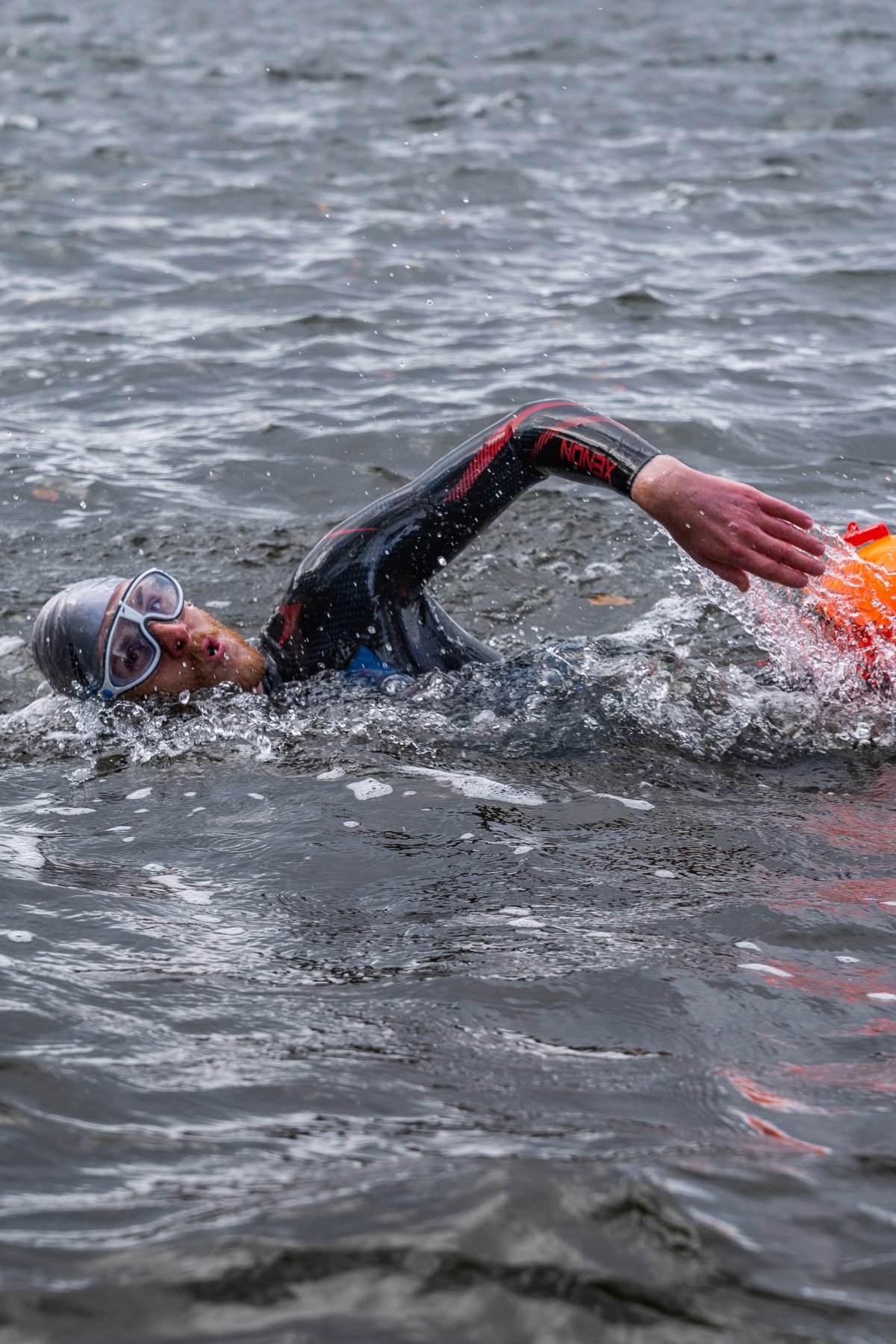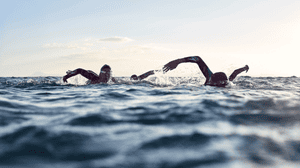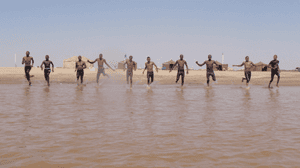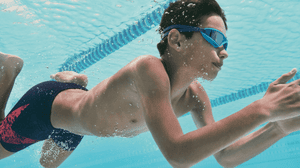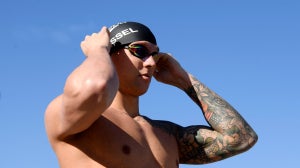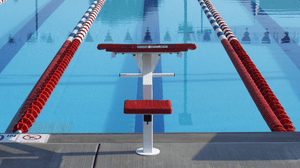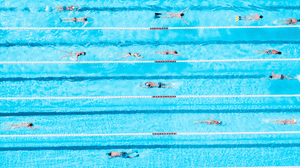
It's dark. I mean, it's full-on pitch black. I briefly bring my head out of the water to sight what I think must be a single house with a light on at the end of Coniston Water. 6pm in November and I'm in the middle of a lake, swimming head down front crawl, in what feels like absolute night time. All I can see is that one light in the distance I'm swimming towards; that and the glow from my lit-up tow float I drag behind me.
These may not be the conditions most people desire for a wild swim. But this is what most of my winter swimming looks like in order to complete the set distance for the Penguin Ninja challenge.
The Penguin Ninja challenge is one of the new Polar Bear challenges recently launched. For the first time, swimmers are allowed to wear a wetsuit. Game-changer. I first heard about the challenge doing my outdoor swim apprenticeship, when I made the transition from ‘just a runner’, to a runner who swims.
The swim group I first learnt ethics and best practice from was full of ‘Polar Bears’: swimmers who’d completed the challenge where you swim a set distance outside throughout each month in the winter swim season (which runs from November to March).
What makes the Penguin Ninja challenge especially exciting? For me, it’s that as someone who spends the whole of winter swimming in a wetsuit, it means I can finally enjoy the Polar Bear challenge without having to swap out my garment of choice for a swimsuit.
The "Ninja" challenge is the toughest options of the Penguin wetsuit-wearing challenges, requiring you to swim a total of at least 3km per month, as well as these 10 set swims over the season:
- Swim 1 - 1500 metres at 9.00 degrees or less
- Swim 2 -2000 metres at 9.00 degrees or less
- Swim 3 -1250 metres at 8.00 degrees or less
- Swim 4 -1750 metres at 8.00 degrees or less
- Swim 5 - 1000 metres at 7.00 degrees or less
- Swim 6 -1500 metres at 7.00 degrees or less
- Swim 7 -750 metres at 6.00 degrees or less
- Swim 8 -1250 metres at 6.00 degrees or less
- Swim 9 - 450 metres at 5.00 degrees or less
- Swim 10 - 1000 metres at 5.00 degrees or less
Back in the dark, I walk out of the water and up onto the shore. I've finished my second week of the challenge. In total, I've swum 5.4km, comfortably over the month's target of 3km. So far, all my swims have been in the dark and in the bigger lakes, and whilst I always have two lanterns on the shore for my entry/exit point, I'm starting to realise how hard it is to sight my line when I'm swimming at night. Having to rely on whatever lights I can see on the lake as I swim away from my own lanterns is tricky. Practically, this makes swimming straight hard. Mentally it can feel a bit disorienting, not having a reference point when you’re heading out into the vast darkness. I've taken to sighting sideways the trees that line the shore for reassurance of my direction and as a further reference point.
Having swum the length of all the Lake District Tarns deeper than 10m during the winter swim season two years ago, I'm very much used to swimming in dark cold water. But this will be the first time I'm focusing on swimming specific set temperatures and figuring out how to find them around the many waters of the Lakes. I expect this’ll mean spending much more time in the water than previous projects and challenges to reach these distances. Good. That's what I'm most looking forward to: seeing how I cope for longer distances and times in the cold temperatures. Just in the three swims I've completed so far I can tell it’s going to get hard fast. We’re not even below 10°c and it already feels perishing!
I know I need to be as protected as possible from the decreased temperatures. That's why for this challenge, I'll be swimming in the Speedo Xenon wetsuit (the same model I've been using the the past three years of my outdoor swimming), some wetsuit booties, wetsuit mitts, a Speedo swim cap and the Speedo Rift mask (with a small flashing light attached to the back strap). I've used this setup in the lowest of temperatures comfortably and trust that I'll stay warm enough throughout the challenge to stay safe. I also always use a tow float with a light inside for extra visibility at night; that way, other lake users and my friends can see me. Alongside this I also tell my friends I swim with how long I am planning to be in the water for and when to expect me back.
I often find the coldest part of my winter swims to be changing out of my wetsuit post swim. So, to help with this, I find the best process is to dry off and change my top half as quickly as I can, putting on many insulating layers and always a warm hat to lock in that heat. Once my top half is covered and protected from the heat-zapping wind, I can then take my time drying and changing my lower half. Once my wetsuit is off I also put on dry mittens (often carrying a spare dry pair in case my first set gets wet) as cold hands hands can really reduce your dexterity after a swim.
I'm aiming to complete the set swims roughly in the listed order as the temperature drops into the deeper winter months, so that it feels progressive. However, chasing winter in the UK isn't always as easy as that, which definitely makes it challenging!
It's that challenge that keeps me fixed on that light on the edge of the lake, and putting one arm in front of another.
Rory Southworth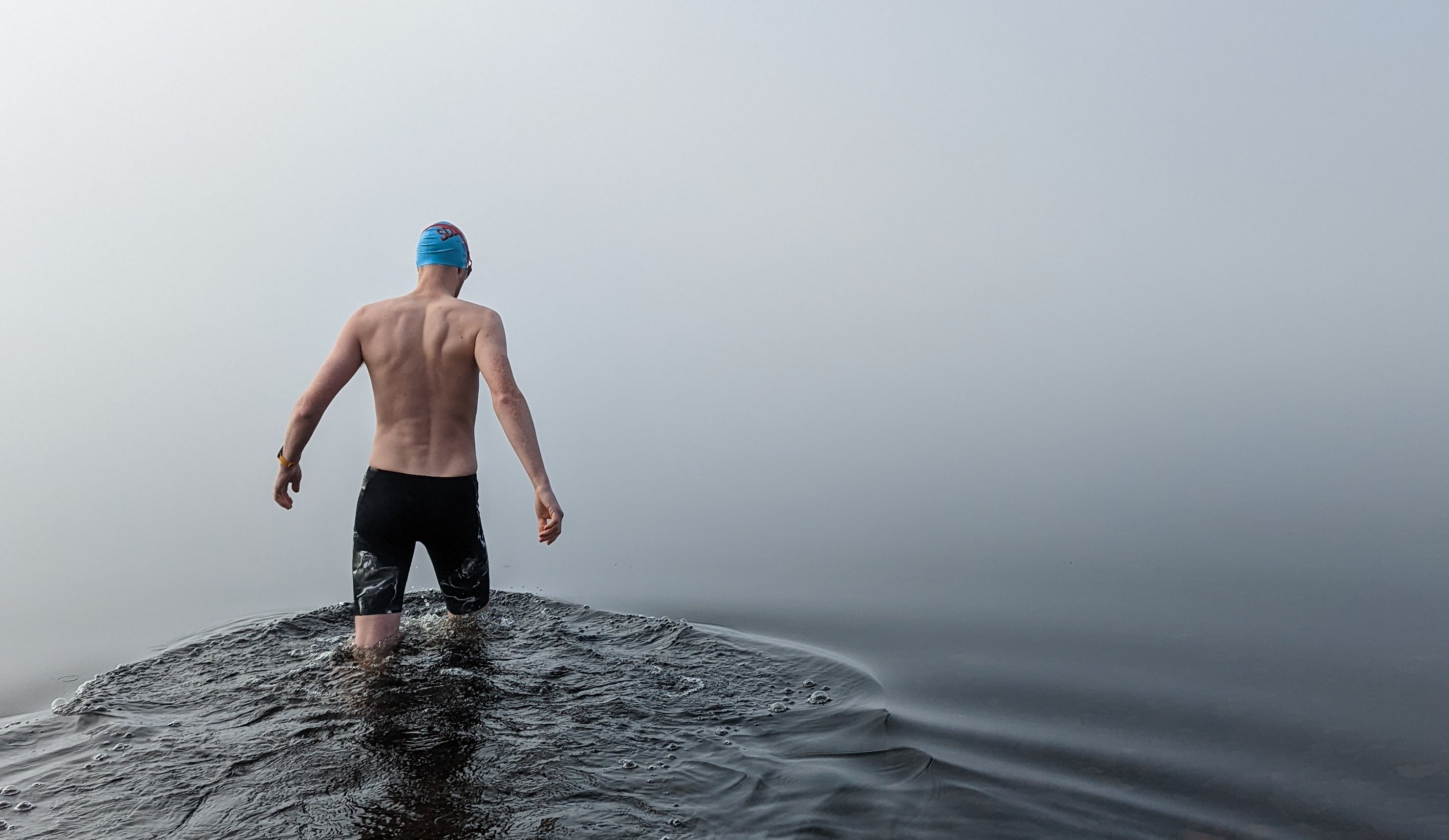
Rory Southworth - Penguin Ninja Swim Challenge
Bring on the summer season of run swims and skins swimming!

Related Articles

